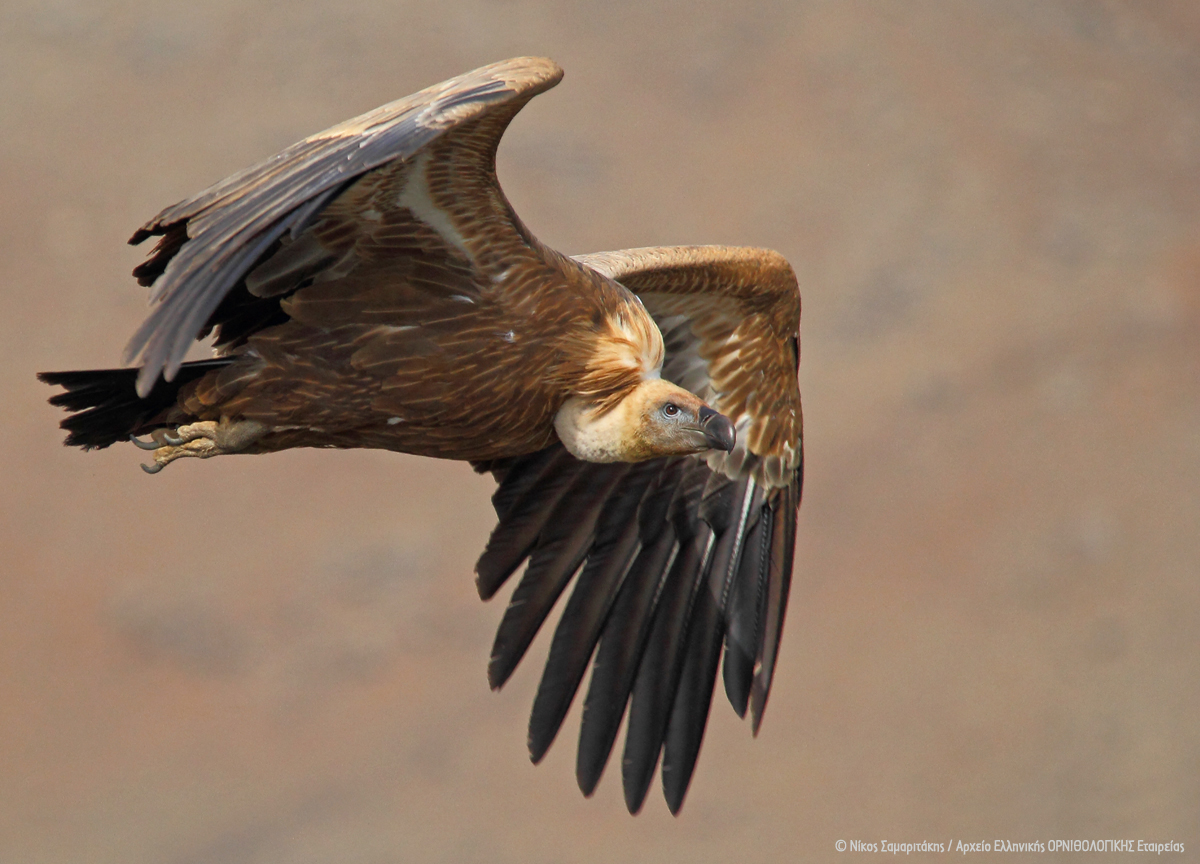
The operation of an acclimatization cage for vultures began in Gergeri, Heraklion
With the reception of the first four vultures on Thursday, January 25, the official opening of a vulture acclimatization cage took place in a mountainous location near Gergeri, Heraklion in Crete. This is a particularly important action for the conservation of endangered vultures since the cage will contribute to their survival and especially for young birds who often -and for various reasons- face adaptation problems in the initial stages of their lives.
The total reconstruction and expansion of the cage, which now constitutes the largest and most specialized related infrastructure in Greece, was financed by the LIFE-IP 4 NATURA project, in the framework of which the National Action Plan for scavenging avian species (vultures) is being implemented under the coordination of the Hellenic Ornithological Society (HOS), a LIFE-IP’s project partner, while the management of the cage has been undertaken by the Natural History Museum of Crete (NHMC) – University of Crete and HOS.
In parallel with the transfer of the first vultures, a presentation of the infrastructure, operation and feasibility of the cage was made by scientists from NHMC and HOS to local authorities and agencies in the area. It was presented, on behalf of the Municipality of Gortyna, by the Deputy Mayor of Rouva Mr. Stylianos Sifakis and the President of the Local Community of Gergeri Ms. Angeliki Papagiannakis, officials of the Department of Environment and Spatial Planning of the Region of Crete and livestock farmers of the area, as well as representatives from the local businesses of Heraklion that undertook the implementation of the project.
The first four vultures brought into the cage were found weakened last summer and, until recently, were housed in informal related infrastructure. This is precisely one of the main reasons for the operation of the cage, namely to temporarily house vultures found to be weak, distressed or dehydrated and in need of mild care as more serious cases of injured vultures are transferred to treatment centers. The cage is suitably configured to resemble the vultures’ natural perches, while there is a permanent water supply and regular food supply under the responsibility of NHMC. After a few weeks’ recovery, the birds will be reintroduced to their natural environment.
Need to be reminded that Crete is the “stronghold” of vultures in Greece, as approximately 85% of the country’s total population lives on the island. Taking this into account and on the basis of the scientific documentation included in the Feasibility Study prepared in the framework of the LIFE-IP 4 NATURA project, a small number of vultures to be released (10-20 young individuals per year) will be transported to continental Greece in order to strengthen the populations there. This specific action is considered compatible with the current state of the vulture population in Crete (estimated at more than 1,000 birds), however it will be constantly re-evaluated in case changes are found in the status of the populations.
Source: Hellenic Ornithological Society
